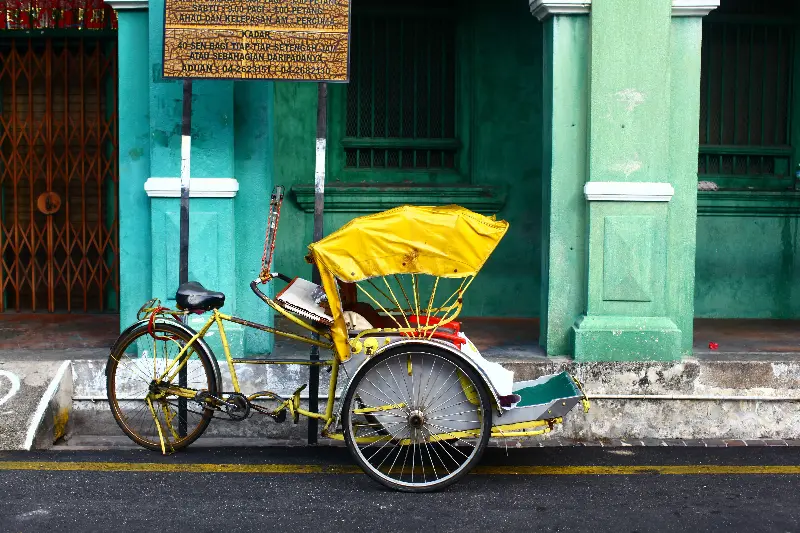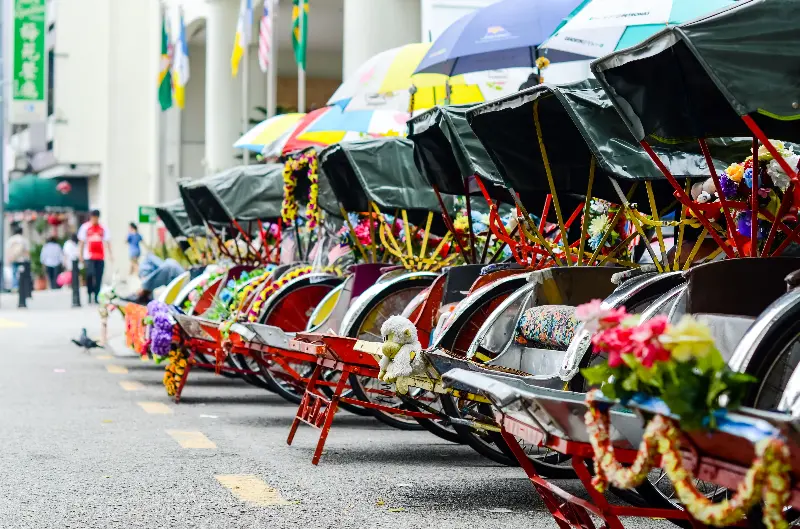Few experiences can summon the essence of Southeast Asia quite like the gentle glide of a cyclo weaving through the bustling city streets. Often adorned in vibrant paint and polished metal, this humble three-wheeled vehicle stands as an enduring symbol of the region’s urban landscapes and rich cultural heritage. Whether it’s the slow clatter of wheels over ancient avenues in Hanoi or a lazy cruise along tree-lined boulevards in Phnom Penh, the cyclo is much more than just a means of transportation—it is a moving window into the heart of a community.

The Birth of the Cyclo
The cyclo’s journey began in the early 20th century, inspired by the popularity of the bicycle and the earlier rickshaw. As Southeast Asian cities started to boom, a need arose for a versatile and affordable vehicle suitable for narrow, chaotic streets. The cyclo—also known as the trishaw in Malaysia and “xe xích lô” in Vietnam—married human pedal power with ingenious design: a sturdy front seat for passengers, perched ahead of the driver and powered from behind.
By the 1940s and 1950s, cyclos had become a fixture in cities such as Ho Chi Minh, Phnom Penh, and Yangon. Originally, they were used by colonial officers, merchants, and the local elite, quickly spreading to become accessible transport for people from all walks of life.
A Symbol of Urban Life
What sets the cyclo apart from other means of transportation is its unique vantage point. Seating at the front, low to the ground, passengers are exposed to the full tapestry of urban life—street vendors hawking their wares, children playing, scents of sizzling food, and the intricate dance of motorcycles and pedestrians.
For decades, the cyclo was the mainstay of city commutes, local delivery services, and even romantic outings. In Vietnam, it soon became customary for newlyweds to hire a fleet of cyclos, festooned with flowers, for their wedding parade—a testament to the cyclo’s place in local joy and celebration.

Design And Distinctiveness
Distinct design features have lent the cyclo its undeniable charm. Traditionally, the vehicle consists of a single or double seat up front, with a protective canopy shielding passengers from sun and rain. The cyclist, stationed at the rear, skillfully maneuvers through traffic, pushing the passenger seat along with smooth, unhurried rhythm. The absence of a motor invites conversations, story-telling, and the organic soundtrack of the city itself.
Over the years, each city and country has added its own twist to the cyclo. In Vietnam, cyclos are typically built with broad wheels and solid, geometric frames, while Cambodia’s phnom penh cyclo often features a more ornate metalwork and a rounded hood. In Penang, Malaysia, the trishaw is famously decorated with garlands, flags, and even playful neon lights for tourist rides at twilight.
Culture And Community Connection
Unlike taxis or buses, the cyclo ride is an invitation to slow down and connect. Operators, often with deep ties to their neighborhoods, double as impromptu guides, sharing stories of local landmarks, hidden corners, and even personal family history. For many, the job is more than work—it’s a legacy handed down through generations. Cyclo operators are frequently the keepers of city secrets and anecdotal historians, offering visitors a personal touch that modern ride-sharing apps simply cannot replicate.
Cyclos are also woven into the fabric of local festivals and parades, serving as platforms for floats, processions, and charitable campaigns. “Riding a cyclo in Saigon or Phnom Penh feels like you’re gliding inside a living storybook,” remarks one seasoned traveler. It’s an immersive lesson in civility, patience, and neighborly goodwill.
Struggles And Survival In The Modern Age
Despite its charm and historical importance, the cyclo faces increasing challenges in the age of rapid urbanization. Soaring numbers of cars, scooters, and buses, coupled with pressure to modernize city streets, have led to strict regulations and a sharp drop in cyclo numbers. For many operators—often elderly men—competition with faster, motorized transport has made making a living difficult.
Yet, in a delightful twist, the cyclo is experiencing something of a renaissance. Heritage-minded city planners and tourism operators are integrating cyclos into city tours and cultural festivals, recognizing their environmental friendliness and nostalgic value. Vietnam, Cambodia, and Malaysia now offer cyclo-themed sightseeing tours, where the rides are marketed as “slow travel” experiences that encourage mindfulness and sustainability.
A Ride Through Time
To ride a cyclo is to take a step back into a slower, more reflective mode of urban travel—one that prioritizes sensory immersion over speed. The rhythm of pedaled wheels and the open view of daily life create space for observation, conversation, and real connection. For locals, it’s a living memory; for travelers, a unique way to enter the pulse of a city.
As modern Southeast Asia races toward the future, the cyclo remains a cherished bridge to the past—a rolling celebration of heritage, ingenuity, and human connection. So, the next time you visit a Southeast Asian city, consider choosing the slow lane. You might just discover that sometimes, the most memorable journeys are those unhurried, grounded by pedal and guided by the enduring grace of a cyclo driver’s smile.
